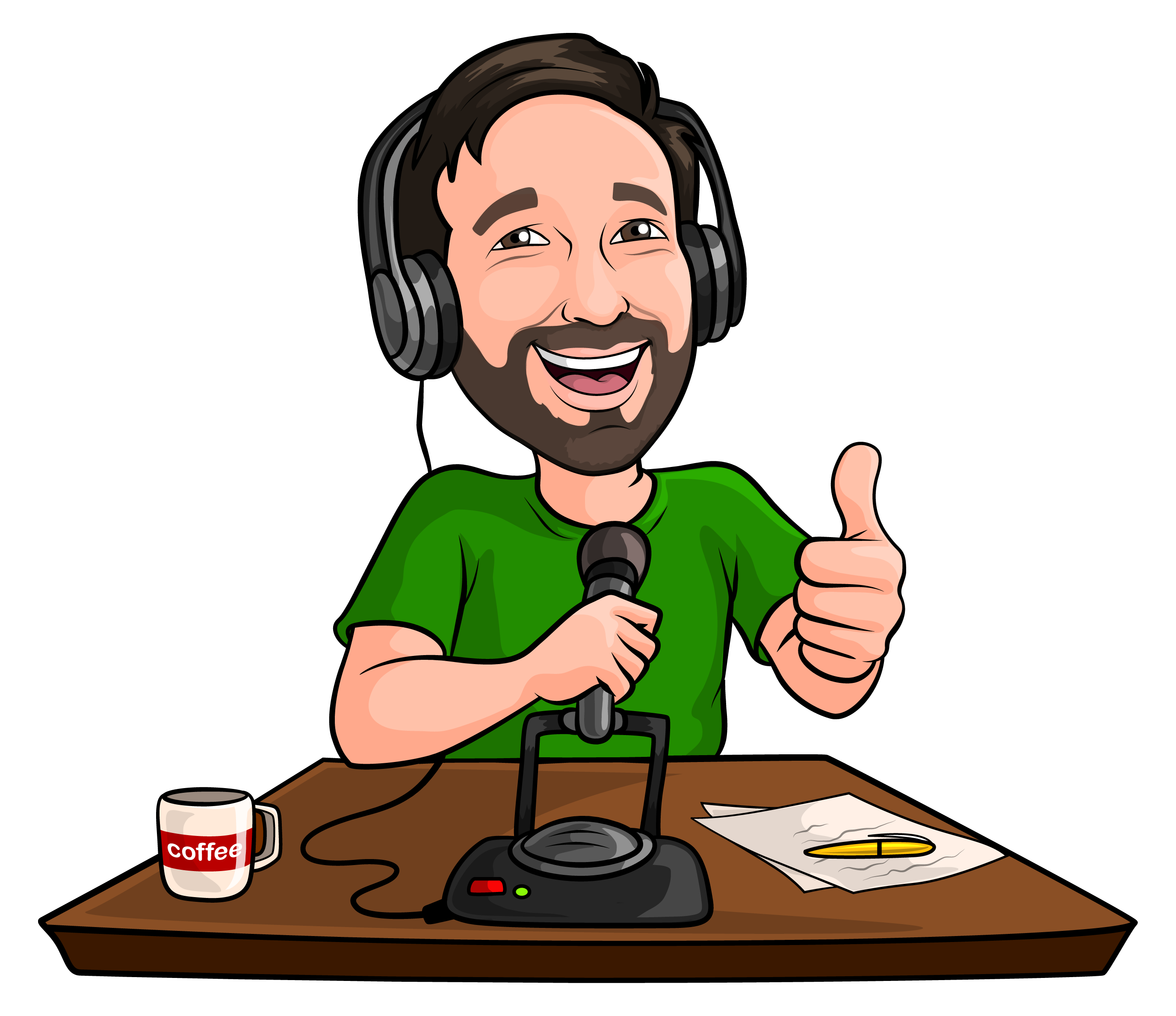Many people ask What is The Best Podcast Equipment for Setting up Your Studio, whether it be for a basic studio or a high tech studio. This question get asked a lot, as podcasts are definitely one of the most potent ways to communicate and engage with your audience.
- Why Start a Podcast Studio?
- Before you buy your technical equipment
- Setting up a Podcast Studio
- Microphones – the Best Podcast Equipment
- Headphones are an essential podcast equipment
- Microphone Accessories for your podcast studio
- Recording and Editing Options
- Mixers for your podcast studio
- Other Equipment to set up your podcast studio
- Summary of The Best Podcast Equipment for Setting up Your Podcasting Studio
Why Start a Podcast Studio?
Many people are considering starting their own podcast, and with very good reason. On Apple alone podcast subscriptions have broken the 1 billion listeners milestone, according to the Washington Post.
People want to hear podcasts, and they are listening to them. Lot’s of them. Whether you are jogging, ironing, or want something to listen to before you go to sleep of a night, the world is turning to podcasts, and the topics being covered are as far ranging as you can imagine. Literally anyone, with some basic equipment and something to say, can start their own podcast studio.
But what do you need technically to start your own podcast studio?
Before you buy your technical equipment
You’ve chosen the topic, picked a title, decided on a format, and now it’s time to pick your equipment.
Many people feel a lot less intimidated doing a podcast than appearing in front of a camera, and the formats of podcasts can go from a one person show to a panel of people. It really is your choice, but with so many people wanting to listen to a podcast show, it might be time to consider starting your own podcast studio. To do this you will need to get it set up.
Setting up a Podcast Studio
There are many setups to choose from, including entry-level options for podcasters on a budget. We’re talking about a barebones setup, which uses your smartphone or laptop, an external mic, and a pair of headphones, all for the grand total of about $70. However, the main focus of this article will be on setting up a podcasting studio which requires a higher budget of about $1000-$1500. The reason for this is that if you are serious about starting Building a Podcasting Studio, you should get it right the first time.
Microphones – the Best Podcast Equipment
Let’s start with choosing the right microphone. There are two main choices here: you have dynamic mics and condenser mics. Condenser mics are more sensitive, and they are able to pick up a wider range of sounds. While this definitely sounds like an advantage, it can negatively affect the quality of a podcast, if the recording does not take place in a soundproof room.
This is why dynamic mics are more suitable for smaller scale productions. The industry standard would be a microphone similar to the Shure SM58-LC Vocal Microphone, Cardioid. These microphones have the best quality/price ratio, and they cost around $100. This mic can serve as a benchmark.
If you have a tighter budget, you can find other mics from the same company, including Shure SM48S-LC – Microphone with on/off switch, which comes at half the price, or you could go with the Audio-Technica ATR2100-USB Cardioid Dynamic USB/XLR Microphone.
The ATR2100 is highly rated on Amazon. It is also equipped with both XLR and USB outputs so that it can be connected to either a mixer or a PC. If you are on a really tight budget, you can buy the Behringer Ultravoice Xm1800s Dynamic Microphone 3-Pack, which comes with three mics and you can check the latest price here
If you are looking for a top-shelf mic, you have the Heil PR-40 Dynamic Studio Recording Microphone, which is one of the best rated in the world, and you can read a review here. Alternatives include the EV RE320 Variable-D Dynamic Vocal – latest prices here, and read a review here and the Shure SM7B Vocal Dynamic Microphone, , which is a favoured microphone for podcasters.
Headphones are an essential podcast equipment
The next part of the setup are the headphones. Headphones are important because they allow you to hear yourself when you speak into the microphone, and this will let you know whether you are too far away from the mic, too loud, too quiet, etc. You will also be able to hear all of the extra sounds picked up by the mic, sounds such as bumps on the desk, or cars driving by outside, and adjust accordingly.
They need to be:
- comfortable
- have no sound leak
- be portable
Some of the highly recommended headphones and their current cost, are listed below:
Sennheiser HD280PRO Headphone (new model)
Shure SRH440 Professional Studio Headphones (Black)
Sony MDR7506 Professional Large Diaphragm Headphone
Audio-Technica ATH-M30x Professional Studio Monitor Headphones
Audio-Technica ATH-M50x Professional Monitor Headphones + Slappa Full Sized HardBody PRO Headphone Case (SL-HP-07)
AKG K 240 Semi-Open Studio Headphones
Microphone Accessories for your podcast studio
You will also need some accessories to go with your microphone, though not all are essential. Certainly you would want the microphone stand to keep your hands free for waving around, or writing note.
These accessories include:
1. A mic stand/boom. A microphone should be 4-6 inches (10-15 centimeters) away from your face in order to get the best recording. For this, you can use a mic stand, which sits on the desk, or a mic boom, which is a mechanical arm that hovers the mic in front of you. A very nice one if you have the budget and are serious about being a podcaster is the Rode PSA1 Studio Microphone Boom Arm Suspension Mount
2. A pop filter/windscreen. These two accessories help you get a cleaner sound from your mic, with pop filters being used indoors, and windscreens being used outdoors. If you want a good pop filter, you can check out the Dragonpad filter.
3. A shock mount. The shock mount is a cage that protects a microphone from picking up vibrations, such as the vibrations caused by typing on the keyboard, desk bumps and adjustments of the mic stand.
4. A preamp processor This is an optional accessory since there are some mixers that have a preamp included. A preamp helps amplify the microphone’s signal before it passes it further down the audio chain. Make sure to pick a quality preamp, since cheaper options can produce unwanted white noise. Some recommended models include the DBX 286s, costing around $190, the Cloudlifter CL-1, about $149, or the Fethead.
Recording and Editing Options
As a rule of thumb, it’s best to go with an external recorder such as, Zoom H4n, Roland R-05, or even Tascam DR-05 (if you are on a tighter budget). An external recorder will streamline your workload. It will allow you to record straight to MP3, mix inputs, connect directly with XLR mics, apply gating, limiting, and compression, and it will also allow you to hear what you’re recording through the headphones.
For the more advanced, they can also offer some extra functionality, such as four channel recording, XLR inputs without a mixer, audio level monitoring, and pause and resume options. Furthermore, since they do not require a computer to be used, they are very portable, which means you can record while you travel, conduct interviews in locations outside your studio, etc.
Of course, there are other recording options. You have specialized PC software, such as Audacity, or Adobe Audition, and mixing software such as Audio Hijack (for the OS X) and Virtual Cable. There is also VOIP recording software, which will allow you to record directly from VOIP tools such as Skype (Pamela for Skype, Ringer, etc.). Finally, if you conduct live streaming interviews and podcasts, you can use the live-streaming tools themselves to record the audio (Google+ Hangouts on Air, Blab, Mixlr, Spreaker, etc.).
Mixers for your podcast studio
Mixers are an optional addition, but they can make your life easier by tackling certain aspects of recording a podcast. A mixer will help you combine sources, such as multiple microphones, soundtracks and other inputs. It will also allow you to adjust the volume of your inputs and outputs in real time. Some mixers provide preamp capabilities, which let you adjust the sensitivity of your mics. You will also be able to combine or separate outputs, and control what channels reach your recorder, headphones, VOIP, live-streaming interface and others. Finally, some mixers will allow you to add effects such as compression, equalization and others.
In terms of equipment, Mackie mixers come highly recommended. A middle of the road option such as the Mackie 1202VLZ4 12-Channel Compact Mixer, offers a decent amount of channels for $270. You can find other options such as the 4 channel version for a lower price, or the 14 channel version for more versatility.
Other Equipment to set up your podcast studio
You might want to consider investing in an audio processor, depending on the equipment build you’ve chosen. For example, if you bought a high-end mixer, you may already have all of the functionalities of an audio processor built in.
An audio processor helps by improving preamps, which reduce the hiss generated by certain mixers and recorders. It can also help with compression, reducing the dynamic range between quiet and loud sections of the recording. Other functions include limiting, which protects against sudden upswings in volume and distortion, gaining/expanding, which prevents noise from being recorded during periods of silence, and other audio processing effects (such as de-essing and EQ) that can be done in real-time. A good audio processor would be Behringer MDX1600 2-Channel Expander/Gate/Compressor/ Peak Limiter.
A headphone amplifier is great if you plan on having a podcast with multiple people. It splits the audio signal into multiple headphone channels, which allows more people to use headphones during the conversation. The choice between different sets of equipment depends on how many people you plan on having on your podcast. A popular option would be the Behringer AMP800 Four Channel Headphone Amp.
Finally, you will need cables to bring it all together. There are no bad choices here, but if you have a larger budget, you can go with either Monster cables, or Mogami Gold Studio cables, which are some of the best. For a quick overview, you will probably need the following types of cables: 1/8”-1/4” audio cable, RCA to 3.5mm audio cable, ¼” Y cable, ¼” speaker cable, and several XLR mic cables.
Summary of The Best Podcast Equipment for Setting up Your Podcasting Studio
The equipment we’ve listed in this guide can be used in a variety of combinations, depending on the scope of your podcast. For example, you could start your own podcast with a very simple setup consisting of a microphone and a PC. However, if you want to go for quality, you will need to invest in several of the items listed here.
If you plan on having multiple people on the podcast, you will need several microphones, several pairs of headphones, a recorder and a mixer. This equipment will not only ensure that you can run a quality podcast, but it will also make your life easier during recording and post-production.
By using this guide, we have provided you with the links to . If you are on a lower budget, you can still get a fairly strong and versatile setup, without compromising quality.





